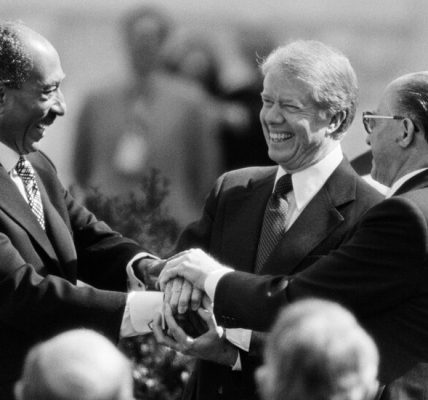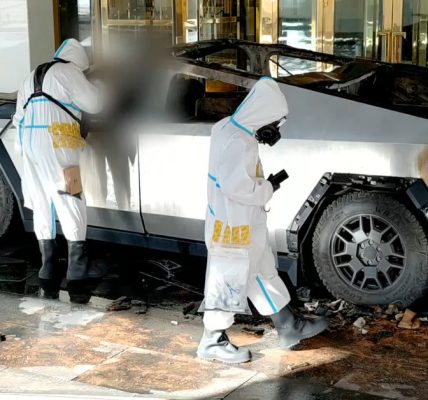Pentagon probe of midair crash: Pentagon probe questions about military helicopter’s path to key in Pentagon probe probe of Wednesday night crash between a jet and a civilian airliner
WASHINGTON, D.C. — Newly installed Defense Secretary Pete Hegseth says the military is investigating Wednesday night’s crash between an Army helicopter and a civilian airliner near Washington, D.C.
So far, 28 bodies have been recovered. There were 64 people on the American Airlines regional jet and three U.S. service members on the Black Hawk helicopter.
The Army unit involved was the 12th Aviation Battalion at Fort Belvoir, and that it had been carrying out an annual proficiency training flight.
The crew of the helicopter was “fairly experienced” and had required yearly night evaluations, even though President Trump said the pilots were to blame for the crash.
A checkride is a different type of flight which has more interesting dynamics in the cockpit. In a check ride, the less experienced pilot might be eager to not make a mistake, while the instructor pilot might be interested in the other pilot’s reaction to new developments. “Sometimes an instructor pilot will test the less experienced aviator to see how they respond, but such a technique would have been unusual and inadvisable in that location given the reduced margin for error.”
Source: Questions about helicopter’s path could prove key in Pentagon probe of midair crash
Investigation of a Black Hawk Helicopter and its Crew Associated with Its Collision During the First Flight on Board a Heavy-Ion Reactor
A male pilot and female co-pilot are on board a Black Hawks, along with a flight crew member, defense officials told NPR. The instructor pilot had over 1,000 hours of flight time. The co-pilot had 500 hours, which is considered average. The Pentagon has not yet released the names of those on board, saying it was still in the process of notifying next of kin.
Officials also tell NPR that the Black Hawk was supposed to be flying at a maximum of 200 feet, though sources say it was flying at least 100 feet higher. The investigation is sensitive so all asked for anonymity.
“There is a low, prescribed altitude for the helicopter to fly at in that location on the route,” Bowman said, “to ensure sufficient and safe distance between the helicopter and aircraft landing or taking off from Reagan. It could be that the helicopter was above the prescribed altitude and that’s what caused the collision. A key focus of the investigation will be that.
“We believe that the investigation will be able to determine whether or not the plane was in the corridor at the time of the incident,” he said.
The National Transportation Safety Board says it has not yet recovered the so-called black boxes from the plane — the cockpit voice and flight data recorders. Federal safety investigators believe that the Black Hawk helicopter may have its own recording devices, which may help provide more clues about the cause of the crash.
John Teichert, a retired Air Force general, told NewsNation that the crash was not caused by this. “I think that while they would have been told to switch runways, it’s not this aggressive maneuver in a regional jet that would prompt them to reposition and be a surprise to the Black Hawk,” he said.
Human error probably played a role in the long-standing shortage of air traffic controllers and pilots. Military and civilian aviation coordination is being looked at by authorities.
“Perhaps safety protocols, human factors were at play,” he says. I don’t like to make conclusions early on. In general, after the H1N1, the passenger number has bounced back quite a bit, but I don’t think the workforce number has caught up in every aspect of aviation.
An Aircraft Collision with a Black Hawk Helicopter and a Passenger Aircraft in the Washington D.C. River, Ont.: The First Major Air Accident in 16 Years
A Black hawk helicopter carrying three soldiers crashed with a Bombardier CRJ-700 jet about a mile from Reagan National Airport. The flaming remains of both aircraft tumbled a few hundred feet into the shallow, icy river.
passenger flights sometimes operate on different radio frequencies than military flights, so the crew may have not heard the tower radioing the Black Hawks. Or there may have been a jammed transmission: If more than one party on a channel are radioing at the same time, that can prevent others from hearing the whole conversation.
The helicopter may have taken off from a military base near the airport. In a grainy video from the Kennedy Center, a smaller light, presumably the helicopter, can be seen overtaking the brighter light of the plane, both of them flying low to the ground. The two collide in an explosion and they split into burning fragments.
The tail of the Bombardier CRJ-700 jet was hit by a US Army UH-60 Black Hawk helicopter that was taking off from Ronald Reagan National Airport. The crash of the military helicopter and the commercial airliner, operated by PSA Airlines on behalf of American Airlines, claimed no one’s life. The crash is the worst US airline crash in 16 years.
The first major US air crash in 16 years happened late Wednesday when a military helicopter and a passenger airplane crashed into the Washington DC river.
On Thursday morning, President Donald Trump appeared to place the blame for a midair collision that killed 67 people on the previous administration’s approach to hiring aviation professionals. The investigators involved in the crash will have a lot of time to look over the evidence to find out what caused it.
The head of the National Transportation Safety Board said at the press conference that she needs more time to do her job. The NTSB is an independent US federal watchdog agency that is leading the investigation into the crash. She said there were substantial amounts of information. We need to verify the information.
In a White House briefing Thursday morning, Trump pointed to a program that also existed through his first administration aimed at expanding the talent pool for the US Federal Aviation Administration to individuals with disabilities. There was no proof, he admitted, that the crash was linked to the FAA’s attempts to improve diversity in its workforce. But he made the connection, he said, “because I have common sense and unfortunately some people don’t.”
In a press briefing, NTSB board member J. Todd Inman said at least seven different working groups will focus on different elements of the flights, made up of federal investigators as well as representatives from the military, aircraft manufacturers, and organizations representing aviation professionals.
The crew involved in the accident will be looked into by an operations group. The body of the plane will be the focus of a group that looks at the wreck and accident scene to see what went on before the crash. Someone will look at the engines involved. Others will look at onboard pneumatic, electrical, and mechanical systems. The group will use recordings and sensor data to determine how professionals at National Airport reacted to the incident. Another will examine the reactions of first responders, and another will examine the helicopter in particular. A human performance group will be embedded in several of the organizations, focusing on what role crew fatigue, workload, medication, equipment, and training may have played in the collision.


